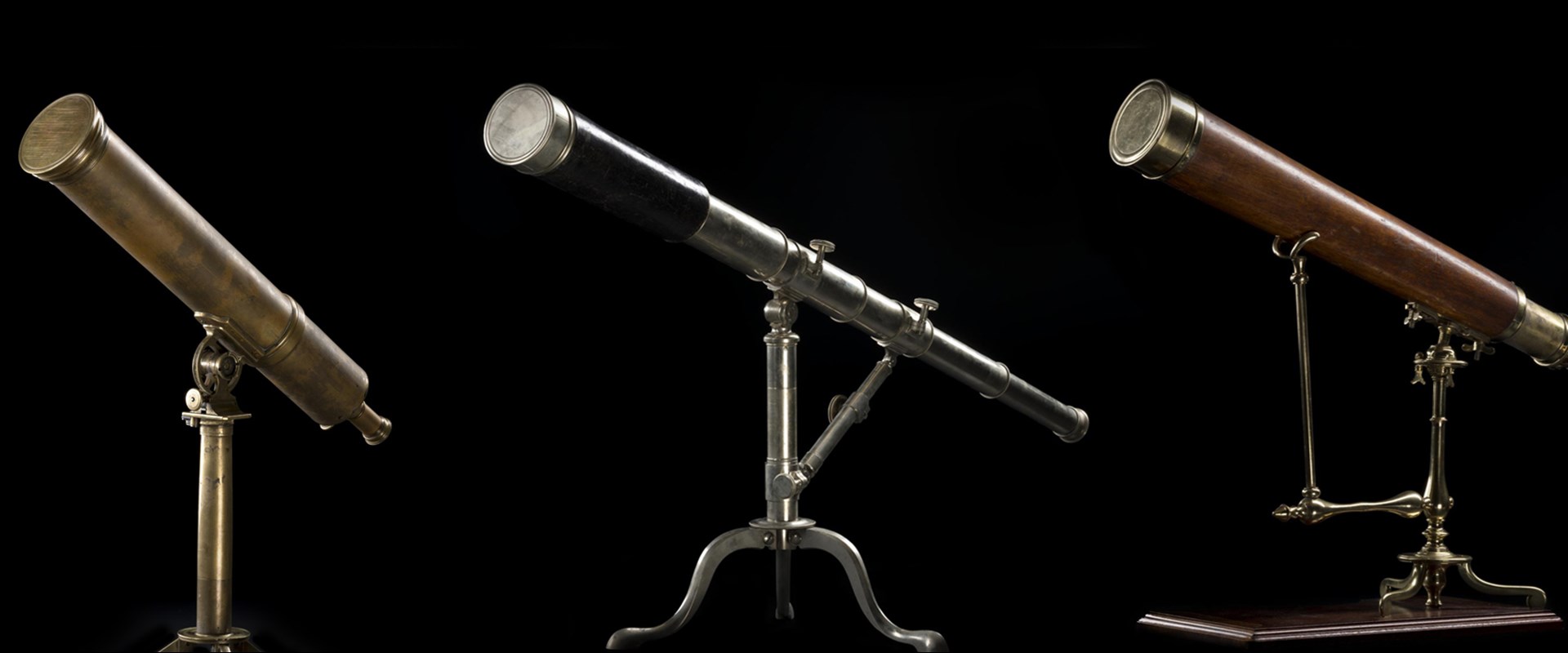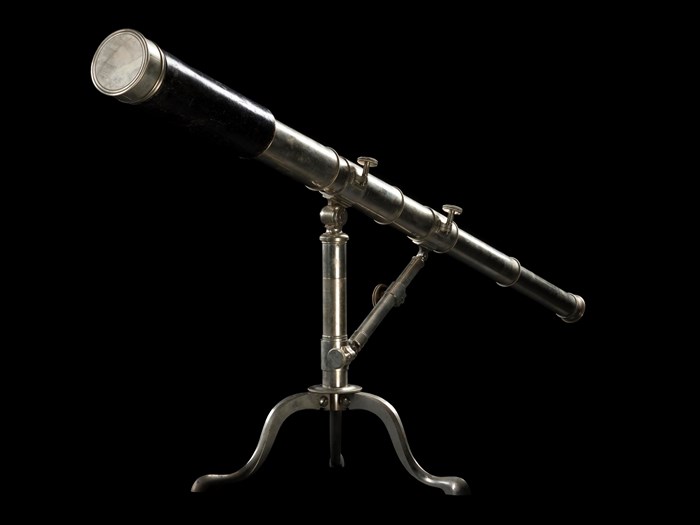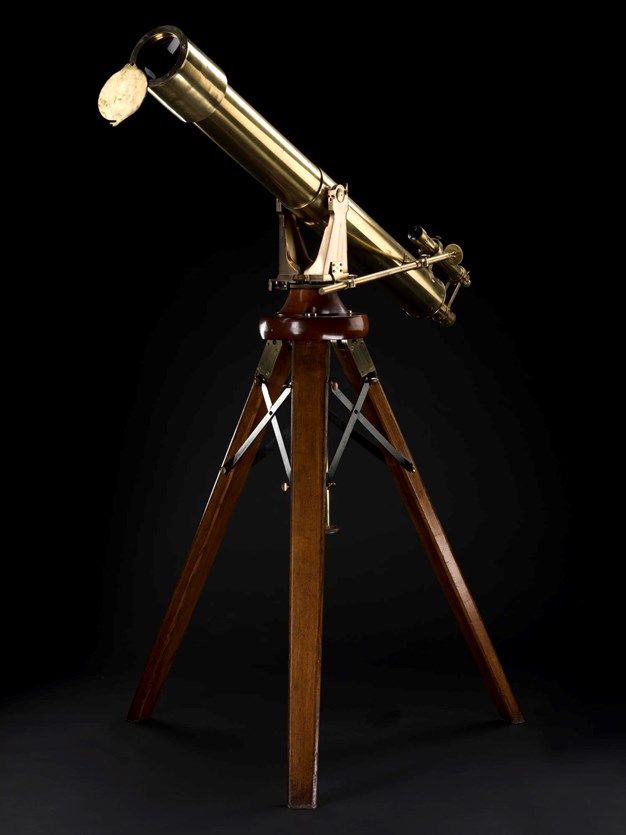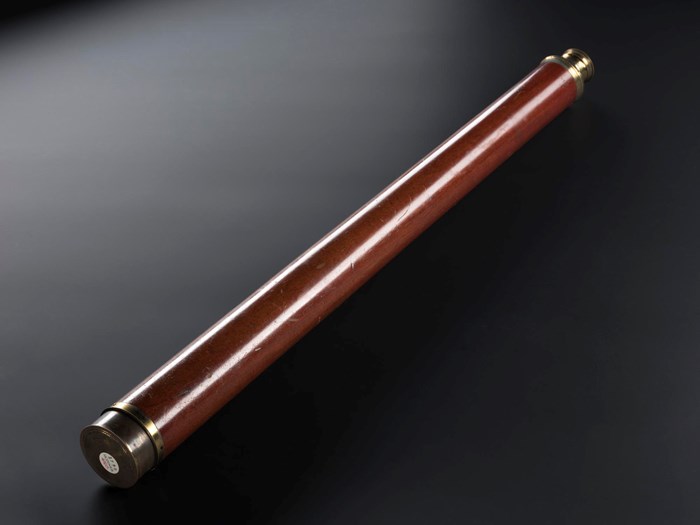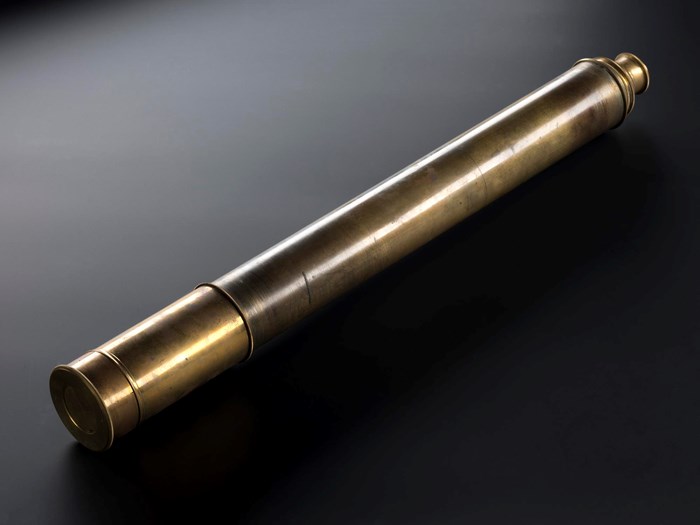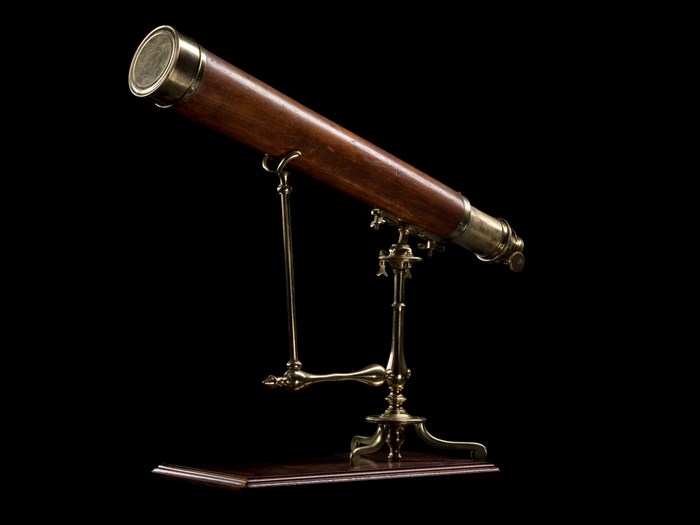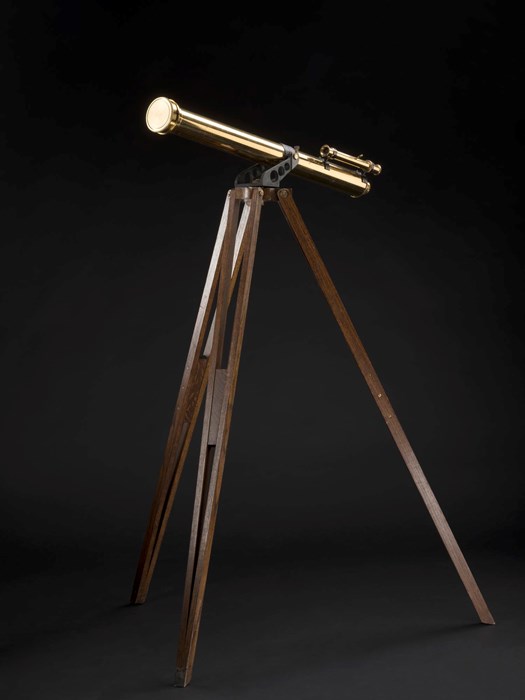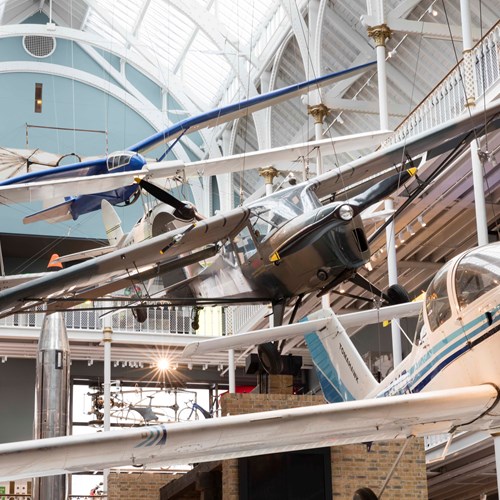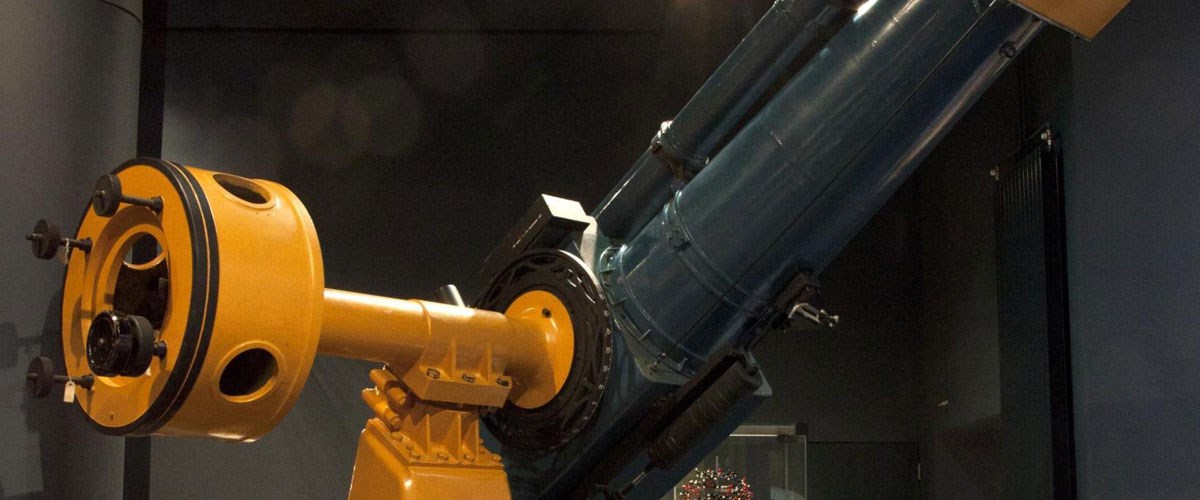2 ½ inch diameter refracting telescope by Jesse Ramsden
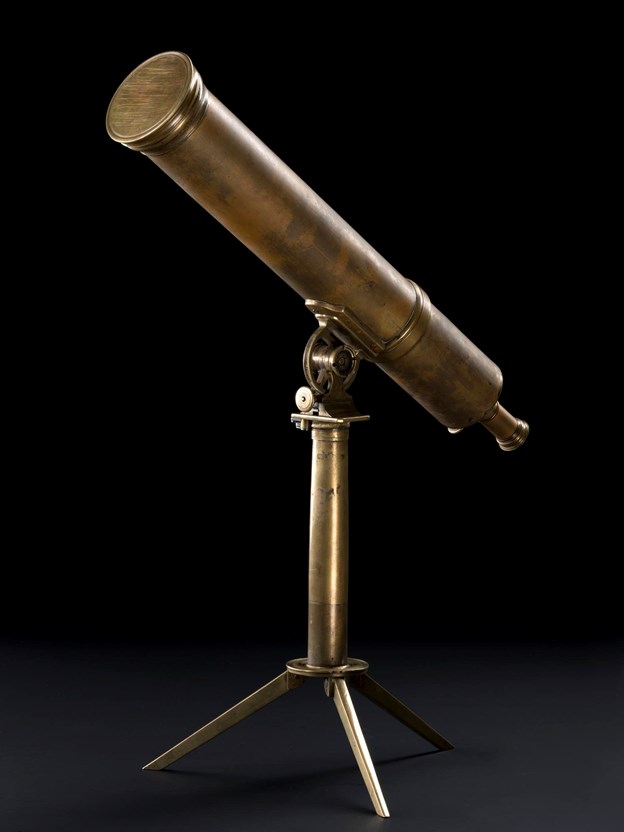
2 ½ inch diameter refracting telescope by Jesse Ramsden, London
This compact telescope, like many in the collection, would have been a personal instrument, rather than part of the equipment of an observatory. It is the oldest telescope in the Murray donation, from about the 1760s.
Jesse Ramsden (1735 – 1800), was considered the leading telescope maker of his time, and made many improvements to instruments for astronomy or surveying. He was renowned for his perfectionism, but also for his tardiness, with major projects taking far more time than agreed or expected.
This telescope is an example of the smaller, simpler instruments which his workshop produced and which served to maintain a cash flow when his most significant instrument were years in production.
It has only a fairly basic adjustment to point it in the desired direction – it could be moved up and down and side to side, but without accurate angle measurements of its position. The main tube of the telescope unscrews and the tripod stand folds and slides inside it so that when disassembled it all fits compactly into its small wooden box for transport or storage.

